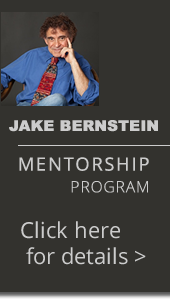A Trader's Guide To Orders and
Their Effective Use
One of the most neglected, but most important areas in futures trading is ORDER PLACEMENT. Several times each week I get calls from subscribers with questions such as what do you mean on the hotline when you say MIT?, or what does STOP CLOSE ONLY mean? How you place orders and what types of orders you place can be very important. At times, they will spell the difference between a profit or a loss. What follows is a relatively brief discussion of the types of orders available to traders, and how to use them for best results.
Use a market order only when absolutely necessary. If you are using an intra-day oscillator type signal which enters at the end of a given time segment, then a market order is acceptable, perhaps even necessary. If, however, you can use a specific price order as opposed to a market order this is preferable. It is not uncommon for markets to make a quick move following a signal, but very often the market returns to its original entry price fairly soon, and a price order would have been sufficient. You can save a great deal of money this way.
If you're holding a large profit and wish to exit a position quickly once your indicators have turned, then it's worth giving some of the profit back just to make sure you are out of your position(s).
Avoid MOC (market on close) orders. All too often such orders are also a "license to steal" since they can be filled at almost any price during the last minute of trading. An MOC order in thin markets is a certain invitation to trouble. Avoid MOC orders unless absolutely necessary. They are not recommended. Many traders jokingly refer to MOC as "murder on close" orders since fills are often so poor. You may be better off simply placing a market order a few minutes prior to the end of the trading session.
Never use market orders with spreads. You are far better off using specific spread levels for entry and exit or you may use specific price orders in each market individually to "leg" into or out of the spread (i.e. enter or exit one side at a time). Considerable slippage is the rule in spread market orders. Unfortunately the only orders you can use in spreads are market orders or price orders. Of the two types, price orders are clearly preferable.
Market if Touched Orders (MIT)
An MIT order to buy is always placed below the market while an MIT order to sell is placed above the market. An MIT order becomes a market order when hit.Therefore, if you have an MIT order to buy at 4150, it will become a market order as soon as a trade occurs at 4150. The pit broker holding this order will immediately buy at the market. You could get filled at any price, but you will usually be filled at or near your order, at times better than your price and a times worse. An MIT order is used when you have a specific price level in mind for entry and you do not wish to take the chance of not being filled. Ordinarily such orders are used for selling at resistance above the market for buying at support below the market.
Traders who use some of the support and resistance methods described in this newsletter on many occasions, may use MIT orders, however do note that such orders can cost you a few ticks. MIT orders are not accepted by all exchanges, nor are they accepted at all times. Under certain market conditions MIT orders may be refused either at the discretion of the pit broker or the exchange.
Fill or Kill Orders (FOK)
A fill or kill order is entered at a specific price with the understanding that the pit broker will attempt to fill your order 3 times at the requested
price. Hence, if you have an FOK order to sell at 4550, the pit broker who gets your order will offer it at 4550 three times. If there is no fill he will immediately cancel or "kill" your order and the "kill" will be reported to you very quickly. The advantage of this order is that you will be able to place it at a specific price and you will get prompt feedback as to whether it has been filled. And that's important! Be aware, however, that not all exchanges or brokers accept FOK orders. Under certain market conditions such orders may be refused. Some brokers will become irritated if you use too many FOK orders that go unfilled since it takes time and effort to place these orders. Discount brokers may be especially unhappy if you use too many FOK orders. Finally, do not place your orders too far from the market or they will not get filled. This will be even more aggravating for your broker. If you plan to use FOK orders then please use orders that are very close to the current price. If you abuse these orders you will frustrate your broker and you will lose the respect of the order takers. So please be mindful of the guidelines I have given you. FOK orders are useful in virtually all situations where entry at the market should be avoided but where there is a need to establish or liquidate a position. Remember that using an FOK order does not guarantee a price fill, it merely guarantees that you will be filled at your price or better or not at all.
Stop Orders
Stop orders are placed either above or below the market. A sell stop is placed below the market. A buy stop is placed about the market. These orders are especially good for exiting positions when they go against you or for entering markets on breakout's. The problem with stop orders is that you will not necessarily be filled at your price in a fast market. When sharp and sudden moves occur in the currencies, TBond futures or S&P futures the result is considerable price slippage. The best way to avoid this is to use a stop limit order as described below.
Stop Limit Orders
A stop limit order is a stop order with a price limit specifier. The reason for using such an order is to allow the pit broker more flexibility in obtaining a fill. Therefore, when you place a buy stop limit order at 6450 with a limit of 6465, this means that you will accept a fill within these limits inclusive. The good part of such an order is that it permits the floor broker more leeway in filling you and it therefore improves the odds that you will be filled. Such an order protects you from too much slippage. Stop limit orders should be used more often by traders, however, few traders actually use them.
Good Till Canceled Orders (GTC) - Open Order
A GTC order does exactly what its name suggests. It is an order which will remain in the market until canceled or filled. A GTC order is also called an OPEN ORDER. Typically all open orders are canceled by your broker at the end of each calendar month and must be reinstated. Position traders may use open orders frequently, while day-traders rarely need GTC or open orders since their work is done at the end of each day.
One Cancels the Other (OCO)
This is an order qualifier. It allows a trader to have two orders entered simultaneously with the cancellation of one contingent upon the fulfillment of the other. In other words, when one of the orders is filled the other will be canceled. This is a good way of "bracketing" markets for either of 2 possible outcomes. As in the case of several other orders noted previously, some exchanges do not accept such orders.
Go to part 4:
The Do's and Don'ts of Order Placement





